Craft celebrating the 75th launch of the Atlas V from Cape Canaveral and the 1 and only flight of the Atlas V 551 variant carrying the US Space Force's USSF-8 mission into Geosynchronous orbit

Mission - USSF-8 :
GSSAP-5 And GSSAP-6:
The USSF-8 mission will launch two GSSAP satellites that will operate in a near-geosynchronous orbit approximately 36,000 km (22,300 miles) above the equator. In conjunction with ground-based radars and telescopes, these satellites will support surveillance operations as a dedicated Space Surveillance network (SSN) sensor for the U.S. Space Force’s SSC.
The GSSAP satellites work in pairs: one of them operates below the GEO belt, while the second one operates above it. The main objective of the GSSAP-5 and GSSAP-6 is to track objects in the heavily-trafficked geosynchronous belt that a lot of companies use for placing their communication satellites. This will help not only to manage traffic and avoid collisions, but also to detect potential threats from space objects. Moreover, the GSSAP-5 and GSSAP-6 satellites will be able to adjust their orbits to approach and image other satellites.
Where is the satellite going? :
Parking Orbit:
(> 300 x 300 km)
Satellites Drop-off Orbit:
Near-Geosynchronous Orbit
[8860 x 8860 km in Droo Orbit]

Rocket: Atlas V (511) :
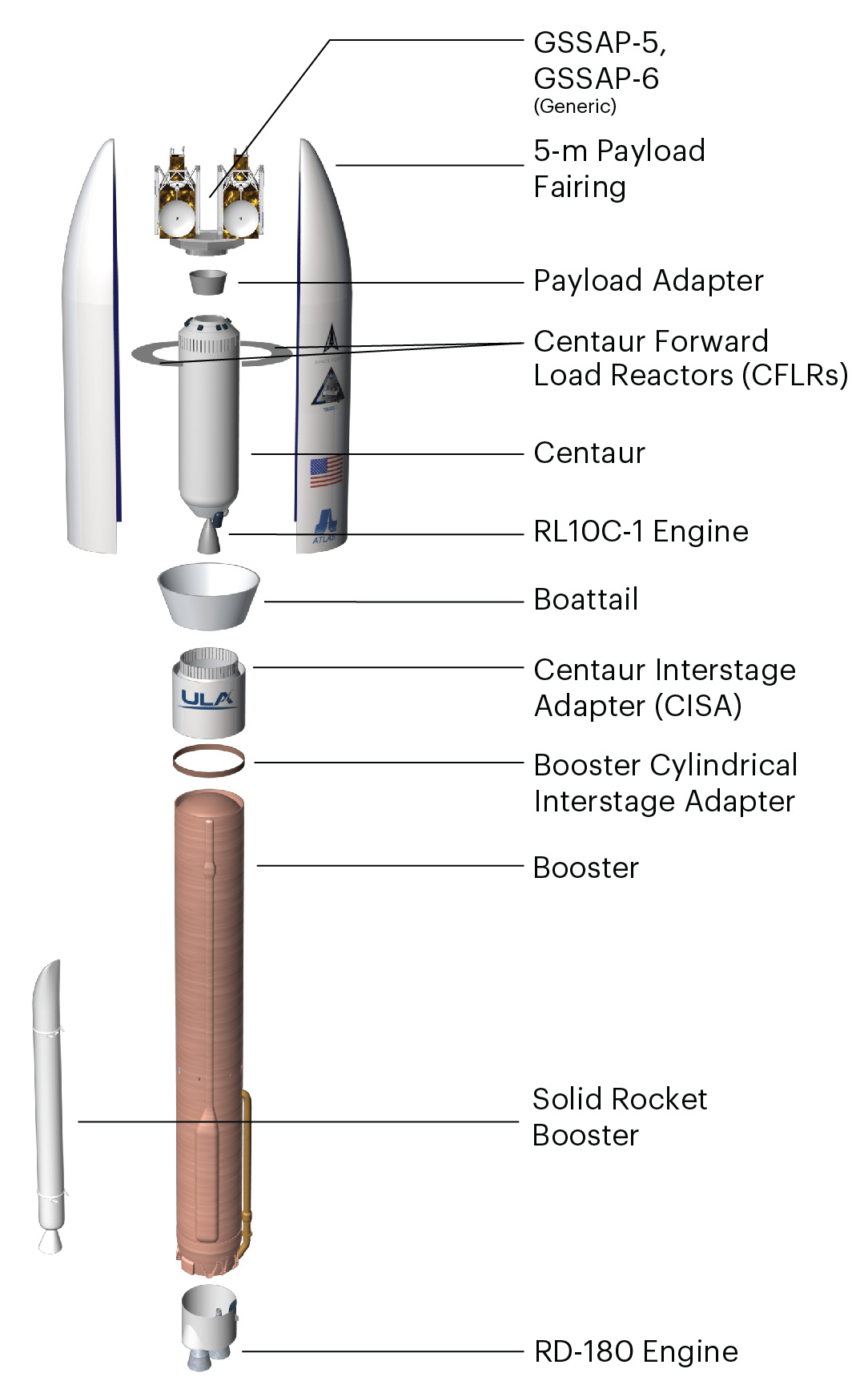
The Atlas V is an expendable medium lift launch system and member of the Atlas rocket family. The rocket has two stages. The first is a Common Core Booster (CCB), which is powered by a single RD-180 engine that burns kerosene (RP-1) and liquid oxygen (LOx). This is accompanied by up to five strap-on solid rocket boosters. The second stage is the Centaur upper stage, which is powered by one or two RL10 engines and burns liquid hydrogen (LH2) and liquid oxygen (LOx).
What does 511 mean?
Atlas V rockets have a three number configuration code. The first number represents the fairing diameter size in meters. The second number denotes the number of solid rocket motors (SRMs), which attach to the base of the rocket. The number of SRMs for a 4 meter fairing can range from 0 – 3. However, the 5-meter fairing Atlas V can support up to 5 SRMs, due to the different aerodynamic properties of the fairing. For the USSF-8 mission, there will be one SRM attached to the center core. The third number denotes the number of engines on the Centaur Upper Stage.

————————————
Craft Notes:
- Auto-Launch to Orbit by Preprogrammed Vizzy. (Throttle 100%)
- Multiple Pad and Rocket Camera setups
- Preprogrammed Vizzy for Launch and circulation phases (>300 x 300 km orbit)
*Fairing Deploy to be done after 95 km AGL (manuallly)
*FInal orbit insertion (GEO) and payload deploy to be done manually
**Note: A roll is programmed into the vizzy from T+51 to T+71s to allow for norminal orientation for Fairing Separation
**Note: Rocket fueled for specific mission
————————————
Credits:
Predecessor Craft by Natedoge - Atlas V 551 1:1 Real Scale
Vizzy by: KAL
Modifications to Rocket, Space-craft and Vizzy by OrbiteX

GENERAL INFO
- Successors 1 craft(s)
- Created On: Mac
- Game Version: 0.9.802.0
- Price: $87,154k
- Number of Parts: 782
- Dimensions: 58 m x 16 m x 16 m
PERFORMANCE
- Total Delta V: 5.8km/s
- Total Thrust: 24.0MN
- Engines: 14
- Wet Mass: 5.53E+5kg
- Dry Mass: 1.01E+5kg
STAGES
| Stage | Engines | Delta V | Thrust | Burn | Mass |
|---|---|---|---|---|---|
| 1 | 2 | 862m/s | 2.9MN | 2.3m | 5.53E+5kg |
| 2 | 4 | 158m/s | 1.2MN | 71s | 5.53E+5kg |
| 4 | 0 | 0m/s | 0N | 0s | 1.74E+5kg |
| 6 | 0 | 0m/s | 0N | 0s | 41,708kg |
| 8 | 1 | 4.8km/s | 800kN | 1.9m | 41,708kg |
6 Comments
- Log in to leave a comment
-
2,592 OrbiteX3.1 years ago
@TerTech Oh... So that's a build by @iSpace
I'll link in the planet in a bit -
-
2,592 OrbiteX3.1 years ago
@TerTech hey there.... Thanks... Just wanted to reconfirm are u referring to the picture I used right at the bottom or the launch pad?
-
-

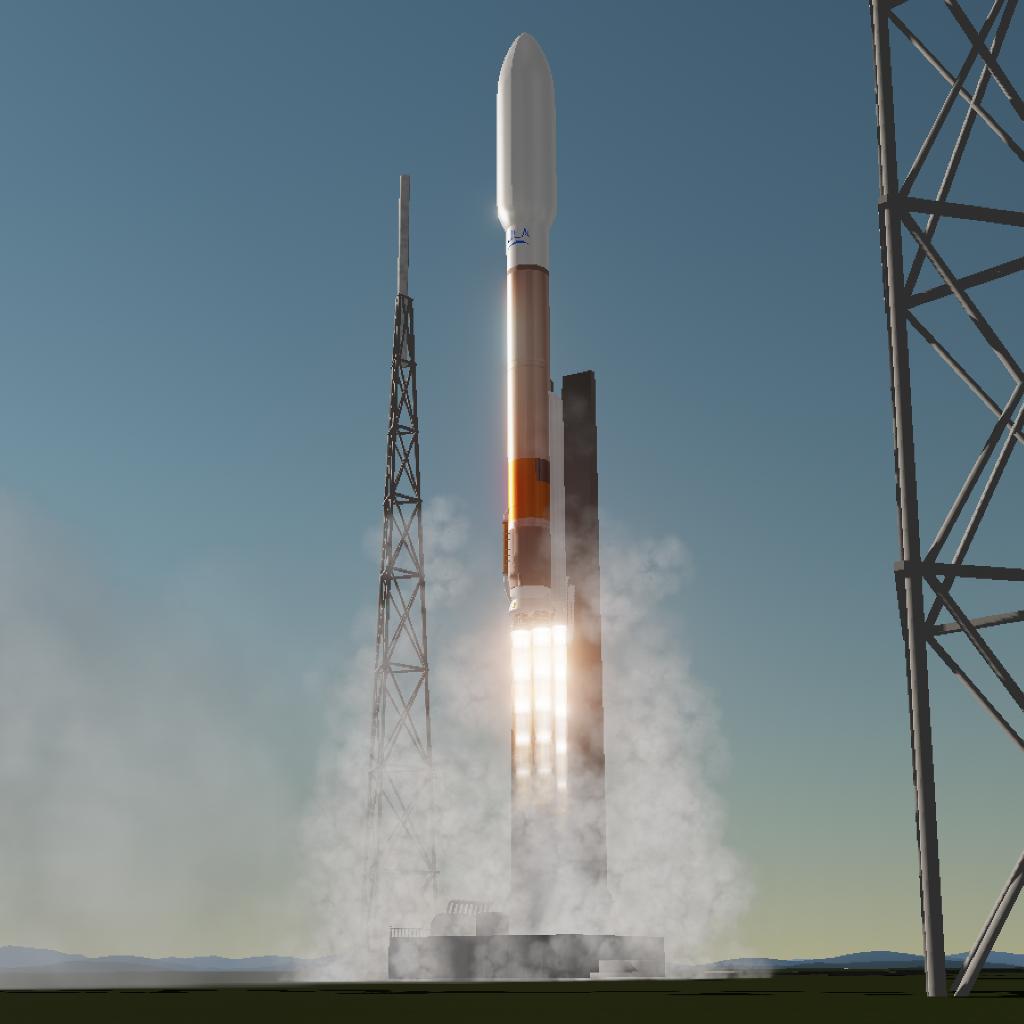
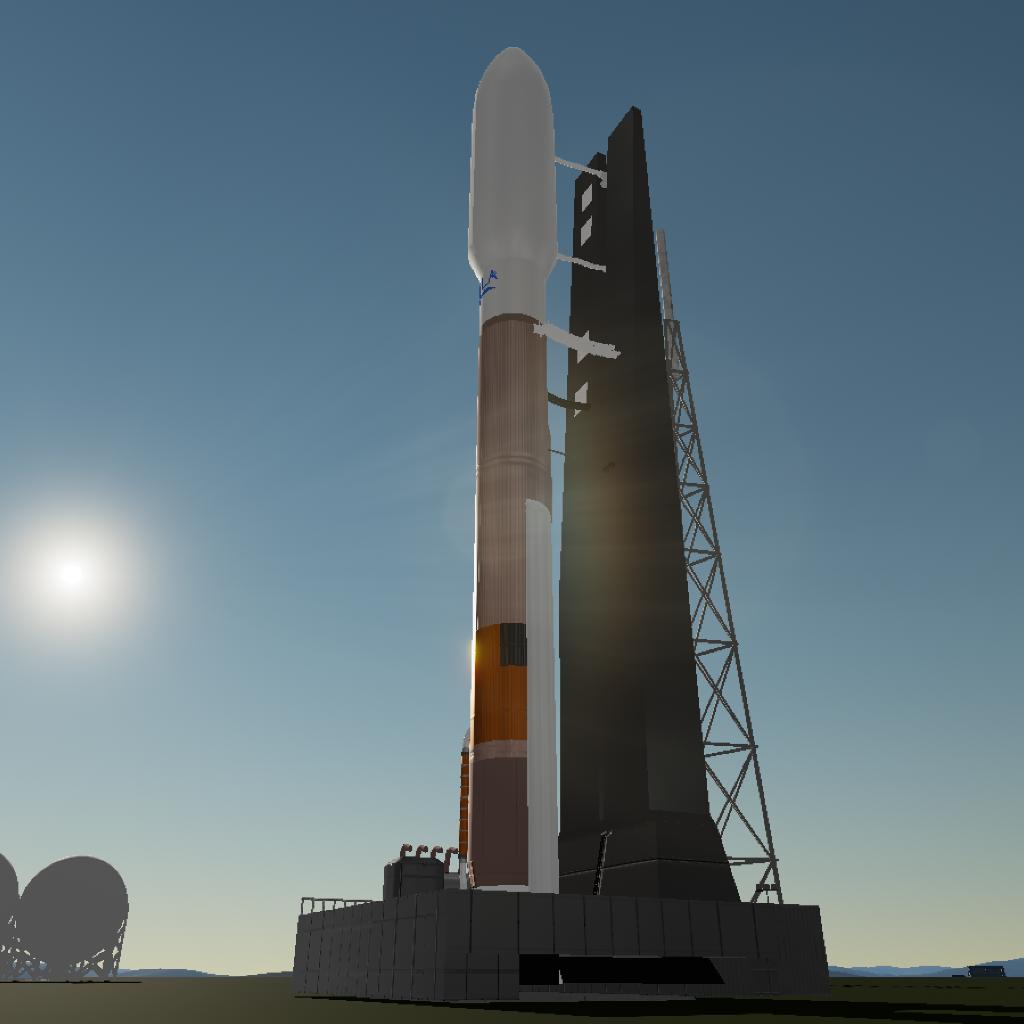
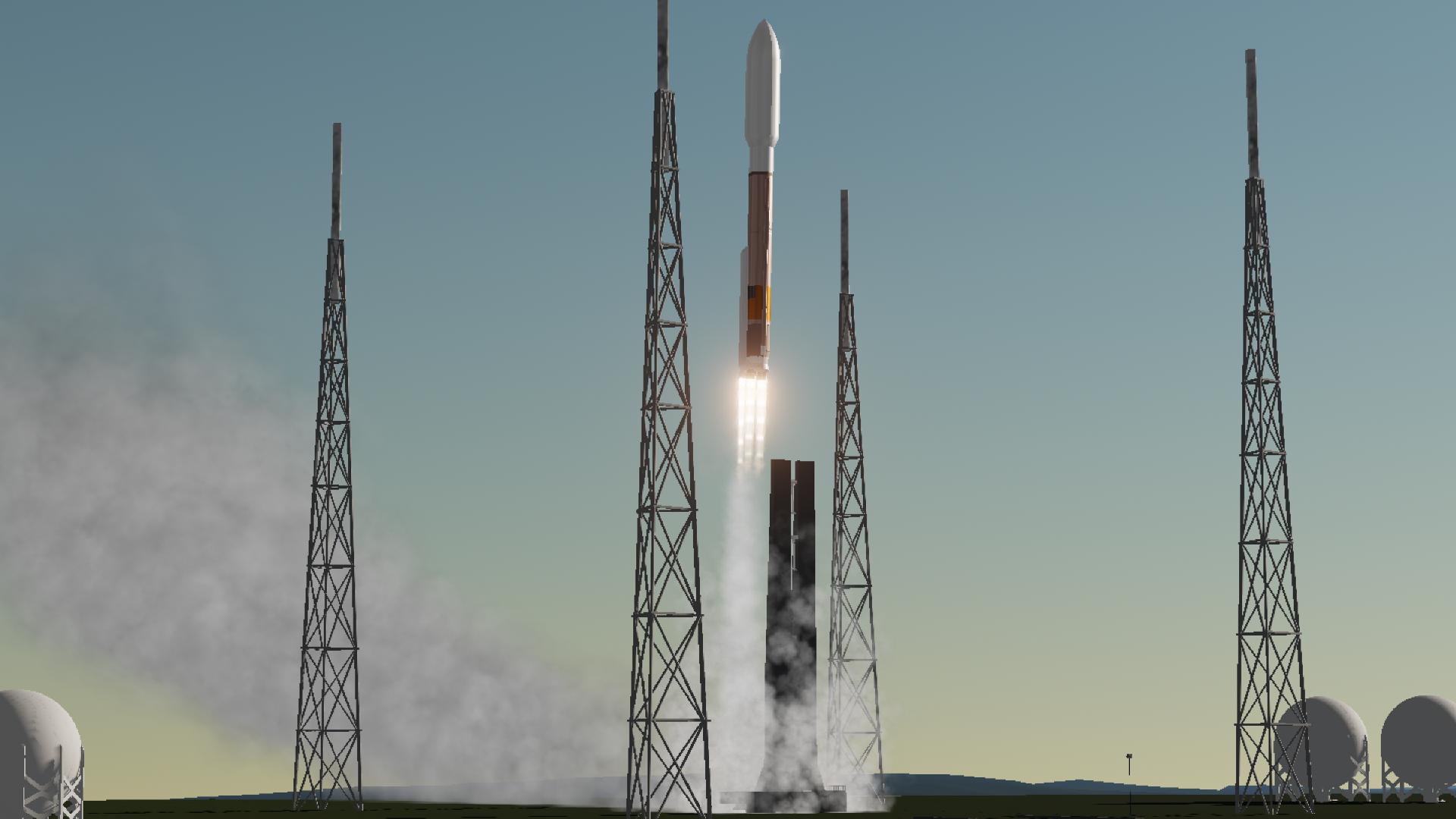
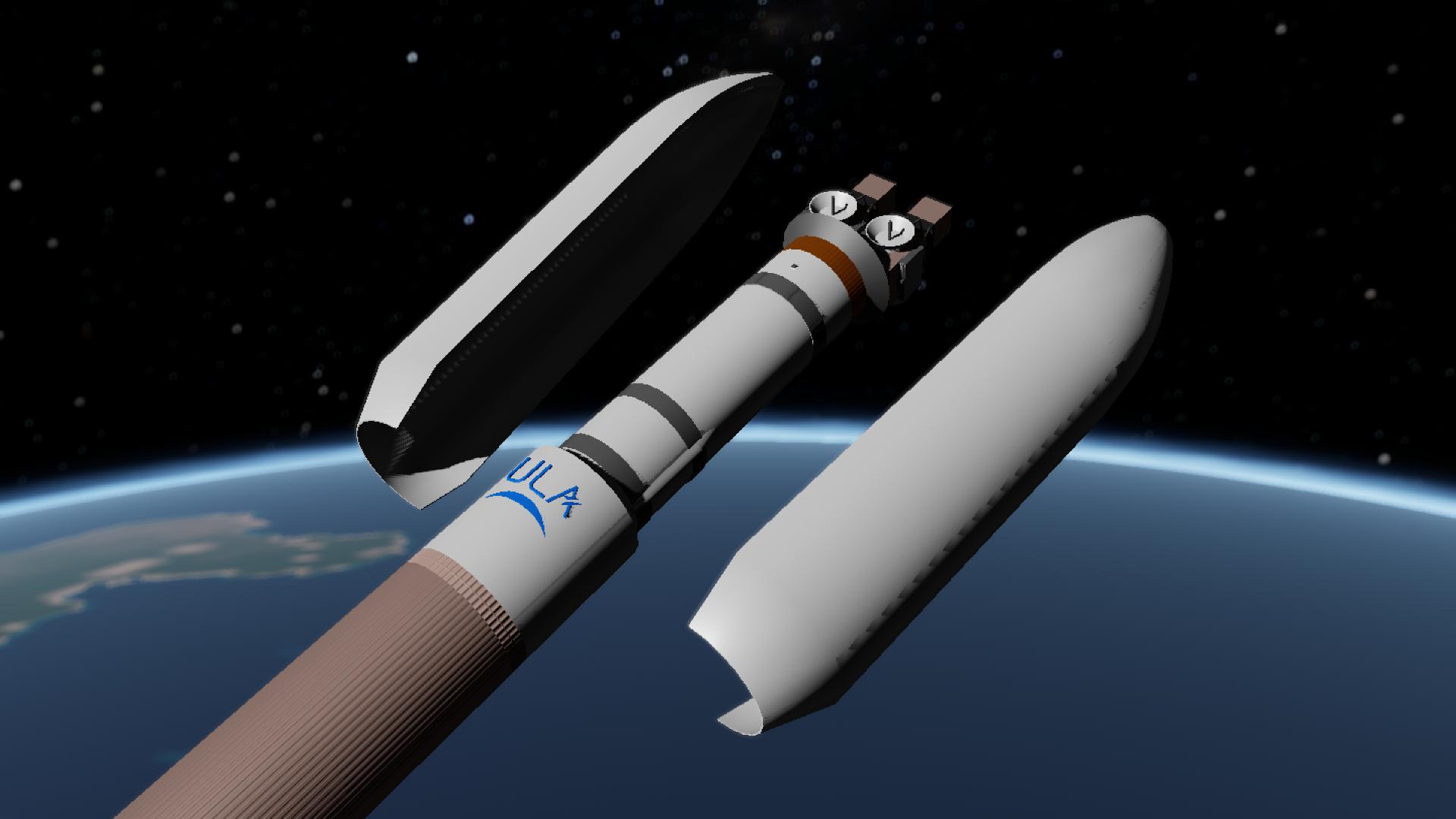
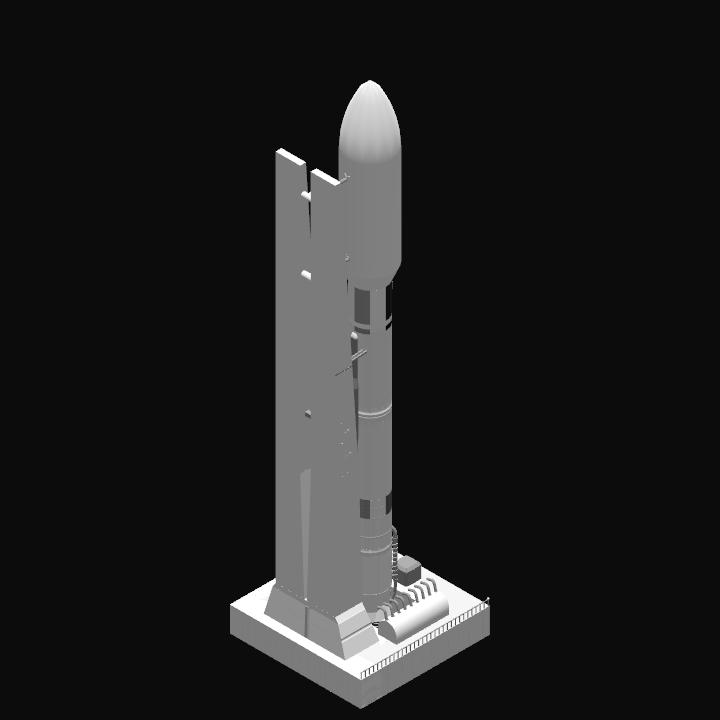
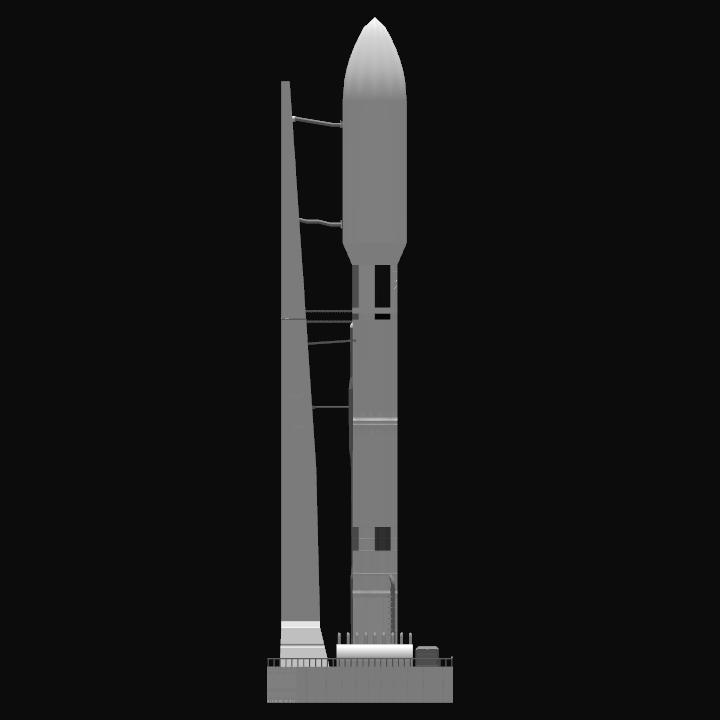
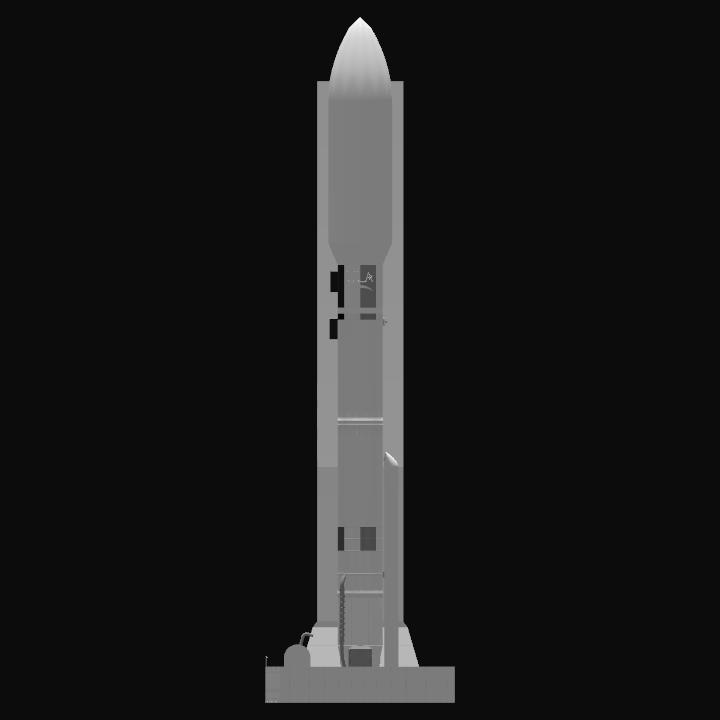
@TerTech i wish it was cape canaveral